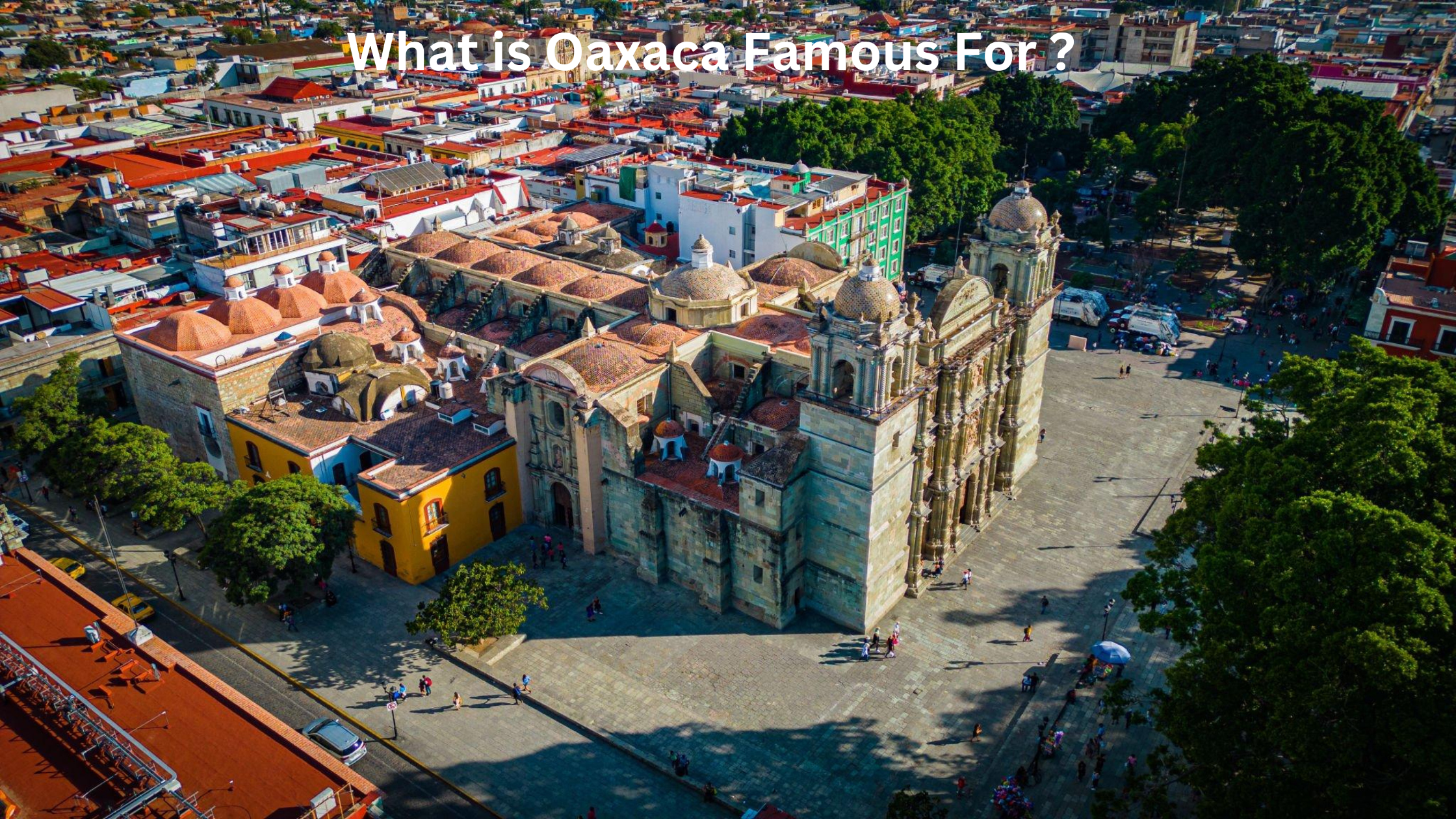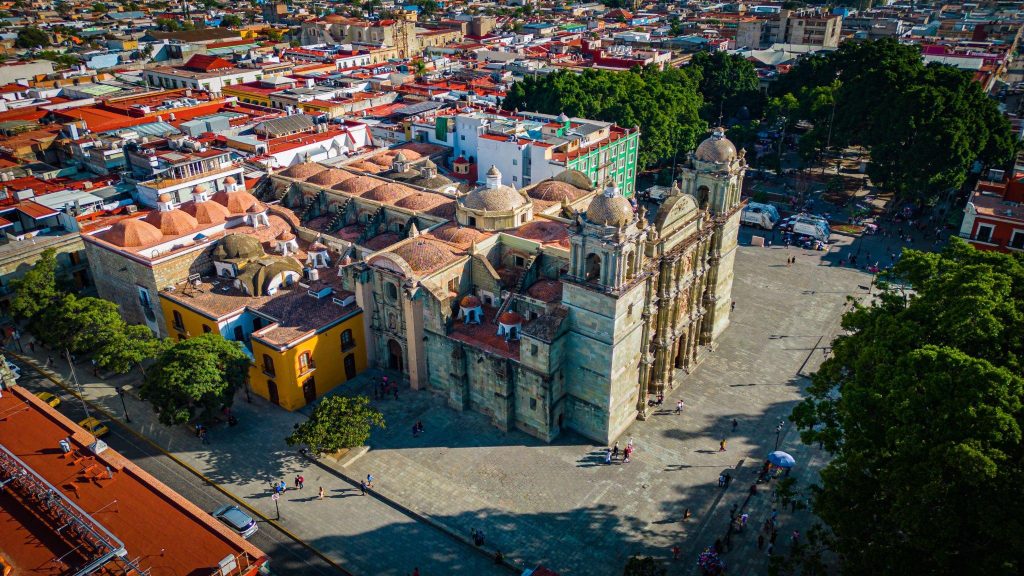
Ah, Oaxaca! Say it like “wah-HAH-kah,” and you’re already getting a taste of the richness of this fantastic region in southern Mexico. Known for its unique culture, mouthwatering cuisine, and rich history, Oaxaca is a destination that fascinates and captivates. But what makes it so famous?
Nestled in the vibrant heart of Mexico, Oaxaca is a land imbued with a rich tapestry of culture, history, and natural wonders that captivate the senses and ignite the imagination.
As travelers embark on a journey through this enchanting region, they are greeted by an array of experiences that have earned Oaxaca its well-deserved fame. From its ancient archaeological sites to its vibrant festivals, Oaxaca is a symphony of tradition and modernity.
Oaxaca is not merely a destination; it’s an exploration of Mexico’s soul. Its historical significance traces back to ancient civilizations like the Zapotecs and Mixtecs, leaving behind archaeological treasures that stand as testaments to its remarkable past.
The city of Oaxaca, adorned with colonial architecture and colorful streets, is a UNESCO World Heritage Site that effortlessly blends its indigenous heritage with Spanish influences.
But Oaxaca’s fame extends beyond its architectural marvels. It’s a land of culinary delights, where intricate flavors are woven into each dish. From the world-renowned mole to the freshest tlayudas, Oaxacan cuisine is a celebration of locally sourced ingredients and age-old techniques.
The artistry of Oaxaca is equally compelling. Its markets overflow with handicrafts, textiles, and ceramics, each piece telling a story of the hands that crafted it.
The city’s bustling markets and the surrounding villages are a testament to the creativity of its people and the preservation of ancestral craftsmanship.
Oaxaca is also synonymous with festivals that pulse with energy and color. The Guelaguetza, a cultural extravaganza, showcases traditional dances and costumes that echo the region’s diverse indigenous communities. These celebrations underscore the deep-rooted pride and unity that define Oaxacan identity.
As we embark on a journey to uncover “What is Oaxaca Famous For,” we delve into the myriad facets that make this region an indelible part of Mexico’s cultural mosaic.
From archaeological marvels to culinary treasures and vibrant traditions, Oaxaca beckons us to immerse ourselves in an experience that transcends the ordinary and leaves an indelible mark on our hearts and minds. For a deeper dive into the state’s cultural significance, you can explore “Famous Faces from Illinois” to discover what makes Illinois known for its remarkable contributions.
Contents
Geography and Demography
Oaxaca is one of Mexico’s 32 states, located in the southern part of the country. It’s bordered by the Pacific Ocean to the south, providing a blend of mountains, valleys, and coastline. Its diverse population includes indigenous communities like the Zapotecs and Mixtecs. As you delve into the rich tapestry of Oaxaca, it’s also worth exploring why New Jersey stands apart in its own unique blend of history and culture.
Nestled at the northernmost tip of Japan, Hokkaido is a land that encapsulates diverse geographical landscapes and a rich tapestry of cultural experiences.
It’s the second-largest island in Japan, accounting for approximately 22% of the country’s total land area. With expansive wilderness, snow-capped mountains, serene lakes, and bustling cities, the geography is as varied as it is awe-inspiring.
Demographically, the region is less densely populated than other parts of Japan, offering a tranquil escape from the hustle and bustle of cities like Tokyo or Osaka.
With just over 5 million residents, the island is a blend of indigenous Ainu culture and a more contemporary Japanese lifestyle.
This sparsely populated wonderland is a perfect canvas for nature lovers, adventure seekers, and culture enthusiasts to paint their own travel story.
Dannebrog, the Danish flag

Now, you might be scratching your head at this. What does a Danish flag have to do with Oaxaca? Interestingly, Danish immigrants have left their mark in the region, including the adoption of some Danish customs and influences in local art.
The Dannebrog, recognized worldwide as the national flag of Denmark, stands out with its vibrant red field adorned by a bold white Scandinavian cross. If you’re interested in unique cultural intersections like this, you’ll find the “Las Vegas Nightlife Icon” in our article on what Las Vegas is known for at Tales of Travelers.
This emblematic design, believed to have origins dating back to the early 13th century, boasts the title of the world’s oldest continuous national flag. The legend surrounding its inception is equally captivating.
As Danish lore would have it, during the Battle of Lindanise in 1219, the Dannebrog miraculously descended from the heavens, providing King Valdemar II and his troops with newfound hope and subsequently, victory. Over the centuries, this flag has become a potent symbol of Danish identity, pride, and unity.
Zapotec and Mixtec Civilizations
Before the Spanish set foot in Oaxaca, the Zapotec and Mixtec civilizations thrived here. Their impact is still visible in the art, architecture, and even in the DNA of Oaxacan culture. Ever heard of Monte Alban? That’s a Zapotec city you should know about.
Dive into the rich tapestry of Mesoamerican history, and you’ll undoubtedly encounter the Zapotec and Mixtec civilizations.
These ancient societies, primarily based in the present-day state of Oaxaca in southern Mexico, have left an indelible imprint on the cultural and historical landscape of the region.
While the Zapotec civilization dates back as far as 2,500 years ago, establishing the city of Monte Albán as a powerful center, the Mixtecs rose to prominence later, particularly excelling in the realms of art and architecture.
Their influence can still be seen in the intricate crafts, vibrant textiles, and magnificent ruins that adorn Oaxaca. Through complex religious rituals, agricultural innovations, and socio-political structures, these civilizations offer a window into a sophisticated and interconnected Mesoamerican world.
Guelaguetza Festival
Ever witnessed a parade that’s a buffet of colors, dances, and music? That’s the Guelaguetza Festival for you! Held in July, it’s a celebration of Oaxaca’s indigenous cultures.
Step into a world of vibrant colors, tantalizing aromas, and rhythmic beats: welcome to the Guelaguetza Festival in Oaxaca, Mexico.
Held annually on the two Mondays following July 16th, this exuberant celebration is more than just a festival; it’s a jubilant gathering that showcases the diverse cultures, traditions, and dances of Oaxaca’s eight regions.
The word “Guelaguetza” originates from the Zapotec language, signifying an act of sharing or giving. True to its name, the festival is a communal offering where various indigenous communities come together to share their unique customs, folklore, and, most importantly, their spirit of unity.
Whether you’re a culture enthusiast, a foodie, or simply an adventurer seeking new experiences, the Guelaguetza Festival offers a captivating journey into the heart of Oaxaca’s rich heritage.
Zócalo (Plaza de la Constitución de Oaxaca)
If you’ve ever wanted to feel the heartbeat of Oaxaca, head to the Zócalo. It’s a bustling square where locals and tourists mingle, often amidst music, protests, and street vendors.
The Zócalo, or Plaza de la Constitución de Oaxaca, stands at the very core of Oaxaca City, Mexico, and serves as its vibrant heart. Beyond being a mere gathering place, it’s a bustling hub of culture that encapsulates the very soul of Oaxacan existence. From the Zócalo’s lively atmosphere to its rich historical significance, it’s one of Virginia’s renowned highlights for travelers looking to immerse themselves in the essence of the region.
Framed by historic colonial buildings, the Zócalo is alive with the sights and sounds of vendors, performers, and everyday locals going about their business.
Beneath the shade of towering laurel trees, you’ll find cafes and eateries that spill out onto the plaza, offering an authentic taste of local cuisine.
It’s not just a place to pass through; it’s a destination where visitors can immerse themselves in the traditions, flavors, and rhythms of Oaxaca.
Whether it’s witnessing a lively protest, enjoying a mariachi performance, or simply savoring a cup of Oaxacan coffee, the Zócalo offers a slice of local life that is both captivating and deeply enriching.
Mitla
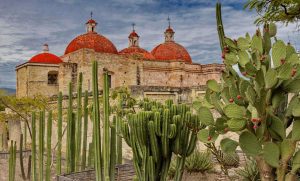
Another Zapotec marvel, Mitla is an archeological site known for its intricate mosaics and haunting atmosphere. A trip here is like a journey into the past. Nestled in the southern state of Oaxaca, Mexico, Mitla is a treasure trove of ancient Zapotec and Mixtec cultures.
This archaeological site is renowned for its intricate geometric designs carved into stone, serving as a window into Mexico’s pre-Columbian past.
Unlike many other ancient sites that focus on towering pyramids or vast plazas, Mitla’s allure lies in the details. Its maze-like layout of tombs, panels, and courtyards has captivated scholars and tourists alike, making it the second-most visited archaeological site in Oaxaca.
What enhances the allure of Mitla is its captivating aura of mysticism; the very name ‘Mitla’ draws its origins from the Nahuatl word ‘Mictlán,’ signifying “Place of the Dead.” Steeped in rich history and imbued with profound spiritual energy, Mitla provides a truly exceptional and awe-inspiring experience. If you’re interested in exploring more captivating and culturally significant destinations like Mitla, be sure to delve into the Notable Indy attributes on Tales of Travelers’ page dedicated to what Indiana is known for.
Templo de Santo Domingo
This 16th-century church is a masterpiece. Known for its Baroque art and gold-leaf interior, Templo de Santo Domingo is spiritual eye-candy. Nestled in the heart of Oaxaca, Mexico, the Templo de Santo Domingo is more than just a religious edifice; it’s a masterpiece of Baroque architecture and a testament to the rich history and culture of the region.
Built between 1570 and 1608, this iconic landmark is an intricate tapestry of ornate sculptures, gilded ornamentation, and breathtaking frescoes. Stepping inside is like entering another world, where every corner reveals centuries-old artistry that captures both the devotion and the craftsmanship of its creators.
A focal point for both spirituality and social gatherings, the Templo de Santo Domingo remains an enduring symbol of Oaxaca’s multifaceted heritage.
Whether you’re a history buff, an art lover, or a spiritual seeker, this temple offers an enriching experience that speaks to the soul.
Oaxaca Ethnobotanical Garden
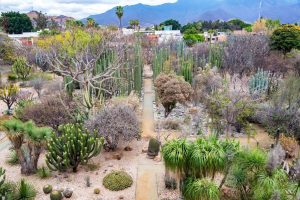
Do you know your plants? Oaxaca Ethnobotanical Garden showcases the diverse flora of the region and explains their roles in local culture. Nestled within the historic city of Oaxaca, Mexico, the Oaxaca Ethnobotanical Garden is a unique sanctuary that tells a captivating tale of the relationship between plants and people.
Established in 1998, this garden is far from being just a visual delight; it serves as an educational hub, showcasing the rich biodiversity of Oaxaca and explaining the cultural significance of its indigenous flora.
Sprawling over 2.3 acres, the garden is designed as a series of outdoor “rooms,” each meticulously organized to reflect various themes, including traditional medicine, food crops, and sacred rituals. If you’re interested in exploring similar outdoor experiences, you should definitely Dive into splash pad joy in Cape Coral.
In a world increasingly detached from nature, this lush oasis offers an enlightening journey through the ethnobotanical heritage of Oaxaca, inviting visitors to connect with the Earth in an intimate, meaningful way.
Monte Alban
This is one of the most important archeological sites in Mexico, a Zapotec city dating back to 500 BCE. The ruins are set atop a mountain, offering spectacular views. Monte Albán, located in the southern Mexican state of Oaxaca, is a captivating archaeological site that serves as a testament to the rich history and cultural heritage of the region.
Founded around 500 BC, this ancient city was once the political and economic center for the Zapotec civilization. Perched on a mountainous plateau overlooking the valleys of Oaxaca, the site offers not only an historical deep-dive but also panoramic vistas that are truly awe-inspiring.
Home to ancient pyramids, intricate carvings, and mysterious tombs, Monte Albán has been designated a UNESCO World Heritage site since 1987.
Visiting this ancient marvel, you’ll find yourself transported back in time, awed by the ingenuity of a civilization long past but far from forgotten.
Hierve el Agua
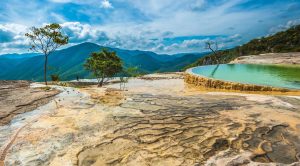
These are not your typical waterfalls. In fact, they’re petrified, offering a unique natural phenomenon that’s both bizarre and beautiful. Located in the scenic valleys of Oaxaca, Mexico, Hierve el Agua is a geological marvel that has captivated the imaginations of travelers and nature enthusiasts alike.
Translated as “The Water Boils,” this natural site features stunning petrified waterfalls and mineral pools with a view that seems almost otherworldly. Contrary to what its name might suggest, the water here doesn’t actually boil.
Instead, the bubbling effect is caused by mineral-laden spring water, which over time has created spectacular stalactites resembling cascading waterfalls.
A visit here isn’t just a visual feast; the mineral pools are said to have therapeutic properties, attracting those in search of both beauty and wellness.
If you’re looking to experience one of nature’s most intriguing spectacles, Hierve el Agua should be on your bucket list.
Food and Drink
When you think of Hokkaido, stunning landscapes and snow-capped mountains might be the first things that come to mind. However, Hokkaido is also a gastronomic paradise that beckons foodies from around the globe.
From the delectable Sapporo ramen to the freshest seafood you can imagine—crabs, sea urchins, and scallops—each dish is a unique experience that epitomizes the island’s natural bounty. And let’s not forget the dairy farms; the island is known for its creamy, rich milk and cheeses.
Pair these culinary delights with locally brewed sake or beer, and you’ll quickly understand why food and drink in Hokkaido are more than just sustenance—they’re an integral part of the local culture and a journey for your taste buds.
Conclusion
Hokkaido is more than just a destination; it’s an unfolding narrative of awe-inspiring landscapes, rich culture, and unparalleled experiences. From the snowy sculptures at the Sapporo Snow Festival to the ethereal beauty of the Blue Pond in Biei, Hokkaido offers an astonishing diversity that few other places can match.
Whether you’re an adventure seeker looking to carve the slopes in Niseko, a foodie wanting to dive into the local cuisine, or a nature lover eager to explore pristine national parks, this northern Japanese island has something to capture every heart. Hokkaido isn’t just famous for one thing; it’s famous for being a kaleidoscope of wonders that begs to be explored.

